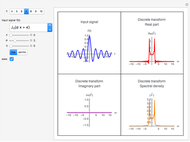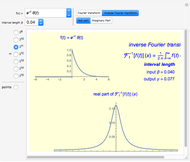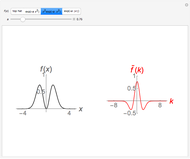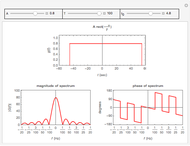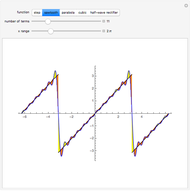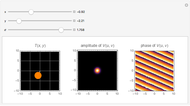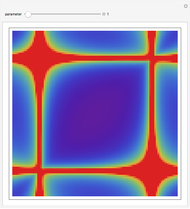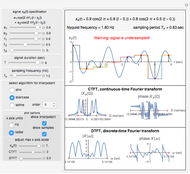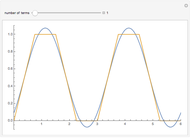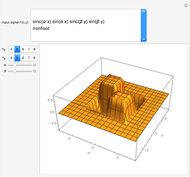XFT2D: A 2D Fast Fourier Transform

Requires a Wolfram Notebook System
Interact on desktop, mobile and cloud with the free Wolfram Player or other Wolfram Language products.
This Demonstration computes the real part of a two-dimensional fast Fourier transform that we call XFT2D to distinguish it from the usual FFT algorithms. It displays the transformed data points joined without any interpolation. XFT2D consists of a Kronecker product of two one-dimensional XFTs, one in each of the  ,
,  directions. It approximates the two-dimensional Fourier transform defined as
directions. It approximates the two-dimensional Fourier transform defined as  evaluated at the points
evaluated at the points  ,
,  ,
,  , with
, with  and
and  . The XFT is an improvement of the standard FFT (see the Details section).
. The XFT is an improvement of the standard FFT (see the Details section).
Contributed by: Rafael G. Campos, J. Jesus Rico Melgoza, and Edgar Chavez (March 2011)
Open content licensed under CC BY-NC-SA
Snapshots
Details
The XFT is a discrete fractional Fourier transform that was obtained in closed form in [1] by using finite-dimensional vectors representing Hermite functions and some asymptotic properties of the Hermite polynomials. The XFT is given by the product  , where
, where  is a diagonal matrix with
is a diagonal matrix with  diagonal element given by
diagonal element given by  ,
,  ,
,  is the standard discrete Fourier transform, and
is the standard discrete Fourier transform, and  . The XFT2D can be defined by the Kronecker product
. The XFT2D can be defined by the Kronecker product  . The XFT is computed with
. The XFT is computed with  and
and  points in the
points in the  and
and  directions, respectively. The XFT is as fast as the FFT algorithm used to compute the discrete Fourier transform, but the output of the XFT is more accurate than the output of the FFT because it comes from an algorithm to compute the fast fractional Fourier transform based on a convergent quadrature formula.
directions, respectively. The XFT is as fast as the FFT algorithm used to compute the discrete Fourier transform, but the output of the XFT is more accurate than the output of the FFT because it comes from an algorithm to compute the fast fractional Fourier transform based on a convergent quadrature formula.
[1] R. G. Campos, J. Rico–Melgoza, and E. Chavez, "XFT: Extending the Digital Application of the Fourier Transform," arXiv, 2009.
[2] R. G. Campos, J. Rico–Melgoza, and E. Chavez, "RFT: A Fast Discrete Fractional Fourier Transform," submitted.
Permanent Citation






